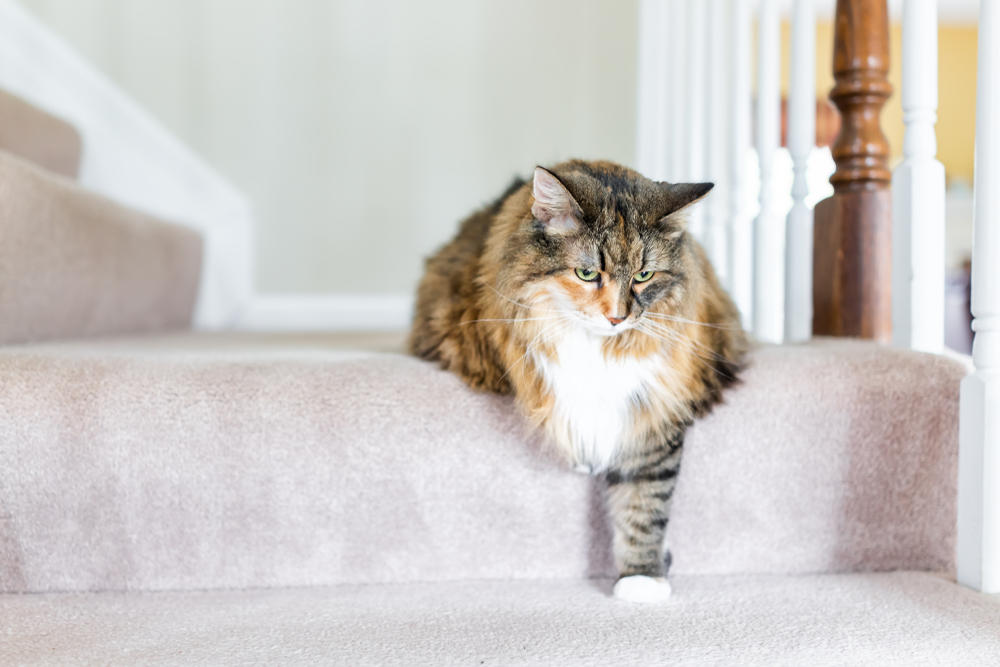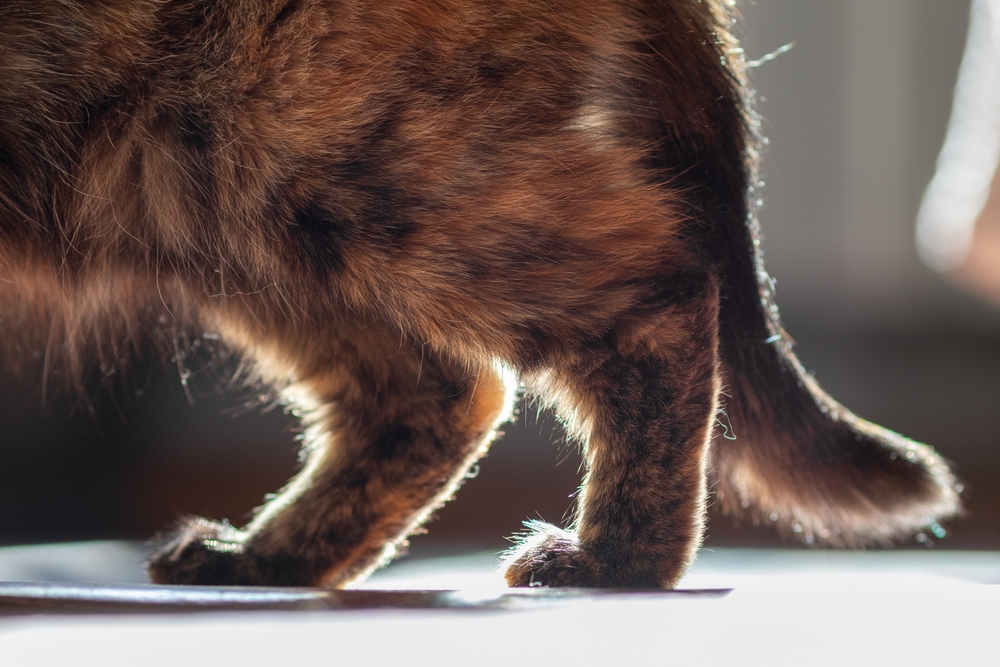Most cat owners expect their pets to become less active with age and maturity, but the changes many people consider “normal” aging could actually be from arthritis. Plus, the disease doesn’t affect only older cats—arthritis can begin as early as 6 years of age. Because cats are experts at hiding their pain, arthritis can be difficult to recognize, and affected cats may be forced to live in pain. To help cat owners advocate for their beloved pets, the Parker Center Animal Clinic team is answering frequent cat arthritis questions.
Question: What is cat arthritis?
Answer: Arthritis—or more specifically, osteoarthritis—is the breakdown of joint cartilage that leads to inflammation and pain. Inflammation then leads to further joint damage, perpetuating the arthritis process. Eventually, arthritic joints become unstable, and painful bone spurs or loose bone pieces and muscle loss develops around the joint.
Q: How many cats are affected by arthritis?
A: Arthritis incidence in cats previously has been underestimated, but recent research shows that around 60% of cats have early signs by 6 years of age, and up to 90% are affected by age 12. At any given time, around 40% of cats are affected, with incidence increasing with age.
Q: How do I know if my cat has arthritis?
A: Because cats are naturally agile and athletic, and changes occur slowly, slight alterations in mobility can be difficult to notice at home. Therefore, annual or semi-annual veterinary examinations are important to detect changes in muscle tone and joint range-of-motion before clinical signs appear. However, you can also learn to recognize signs if you know what to look for, such as:
- Decreased overall activity
- Hesitancy to jump up or down
- Lameness
- Taking stairs one at a time
- Decreased appetite
- Unreliable litter box use
- Behavior changes (i.e., hiding, irritability)

Q: How do veterinarians diagnose feline arthritis?
A: Physical examination is a useful tool to detect joint changes. Arthritis exam findings may include:
- Joint crepitus—cracking, grinding, crunching
- Decreased muscle tone
- Decreased range-of-motion
- Swelling
- Guarding behavior, indicating pain
X-rays can confirm the diagnosis in most cases. If autoimmune disease or systemic illness are suspected rather than osteoarthritis, your veterinarian may also recommend blood work, urinalysis, or a joint fluid analysis.
Q: Can cat arthritis be cured?
A: Unfortunately, once started, joint destruction cannot be reversed. However, early diagnosis and treatment can significantly slow or stop progression, and preserve your cat’s remaining joint function.
Q: Can I give my cat the dog’s pain medication?
A: Cats do not metabolize drugs the same way as other animals, including dogs, which gives veterinarians limited options for pain control. Non-steroid anti-inflammatories (NSAIDs) are the mainstay treatment in dogs, but cannot be used in cats. Two specific anti-inflammatories are safe for cats, but they must be used as a single dose or for no longer than a three-day course, because longer time periods risk organ damage. A pain medication called gabapentin can be used safely in cats, in conjunction with other treatments.
Q: What are other treatment options for cat arthritis?
A: Finding safe, effective treatments for arthritic cats has been a research priority in the veterinary community, and new options are becoming available. Treatment strategies can be tailored to each individual cat’s temperament, disease severity, and pet owner financial constraints. Options include:
- Solensia — This new monoclonal antibody treatment is a once-monthly injection that targets a substance in the arthritis pain pathway.
- Adequan — Used off-label for cats, this injectable treatment protects remaining joint cartilage.
- Supplements — Glucosamine, chondroitin, and omega-3 fatty acids can help reduce inflammation.
- Laser therapy — Cold lasers use specific light wavelengths to improve local circulation and tissue healing.
- Alternative therapies — Acupuncture and chiropractic therapy are helpful for some cats.
- Rehabilitation — Physical therapy is possible for some cats, depending on temperament.
- Surgery — Surgery may include joint fusion or amputation, but is a last-resort option.
Q: Can I prevent arthritis development in my cat?
A: Joint supplements containing glucosamine and chondroitin may help protect cartilage and delay onset of arthritis in some cats. Best results are achieved in young cats, before arthritis takes hold. Keeping your cat lean is also important, because obesity will place extra strain on joints and encourage systemic inflammation.
Similar to humans and dogs, most cats will develop joint degeneration to some degree as they age. Pain signs in cats are difficult to recognize, but you can help your Parker Center Animal Clinic team diagnose cat arthritis early in the disease course with our semi-annual wellness examinations in your cat’s senior years. Contact us to schedule a visit if your cat is showing arthritis signs, or is overdue for their next wellness examination.






